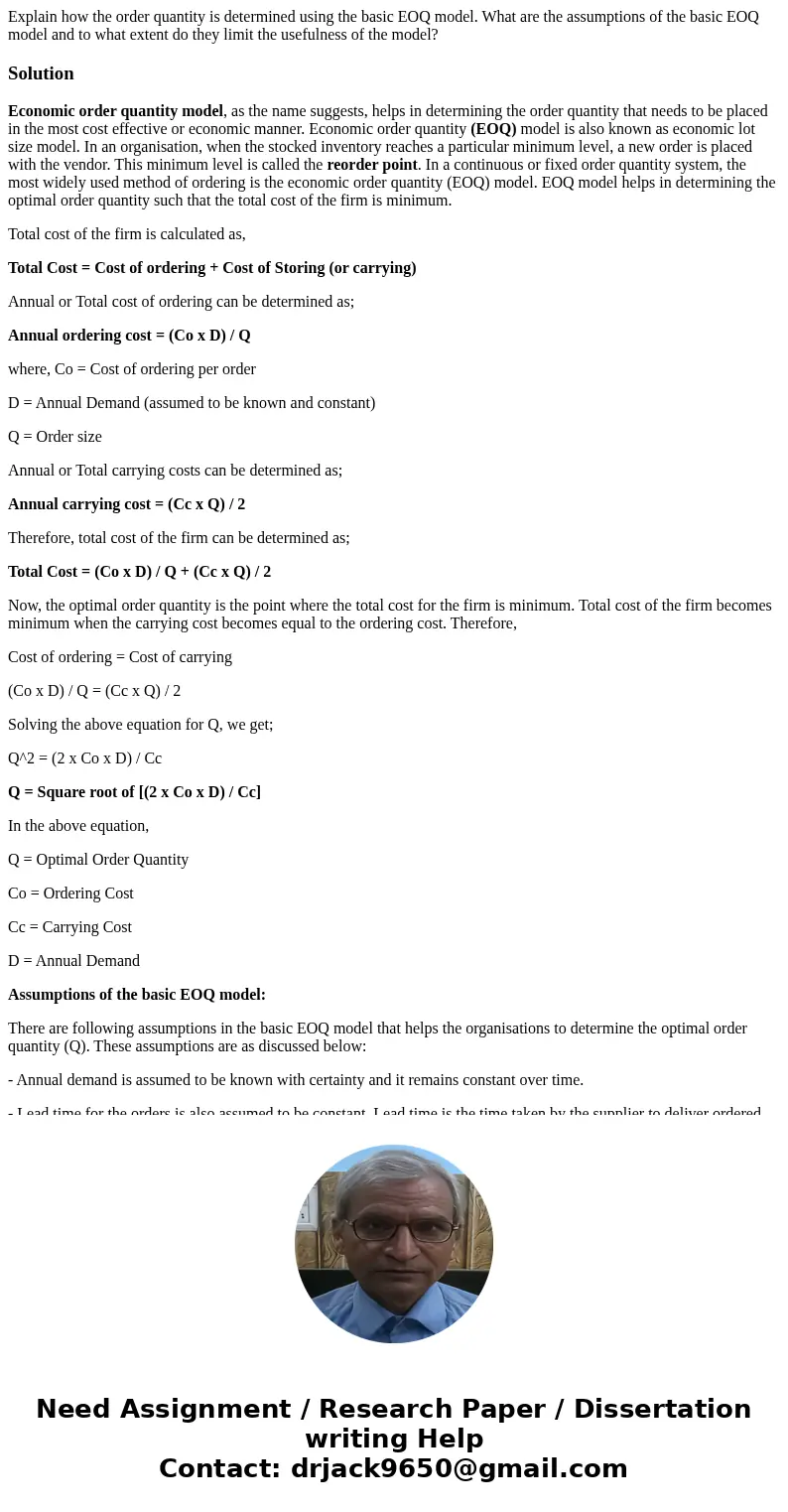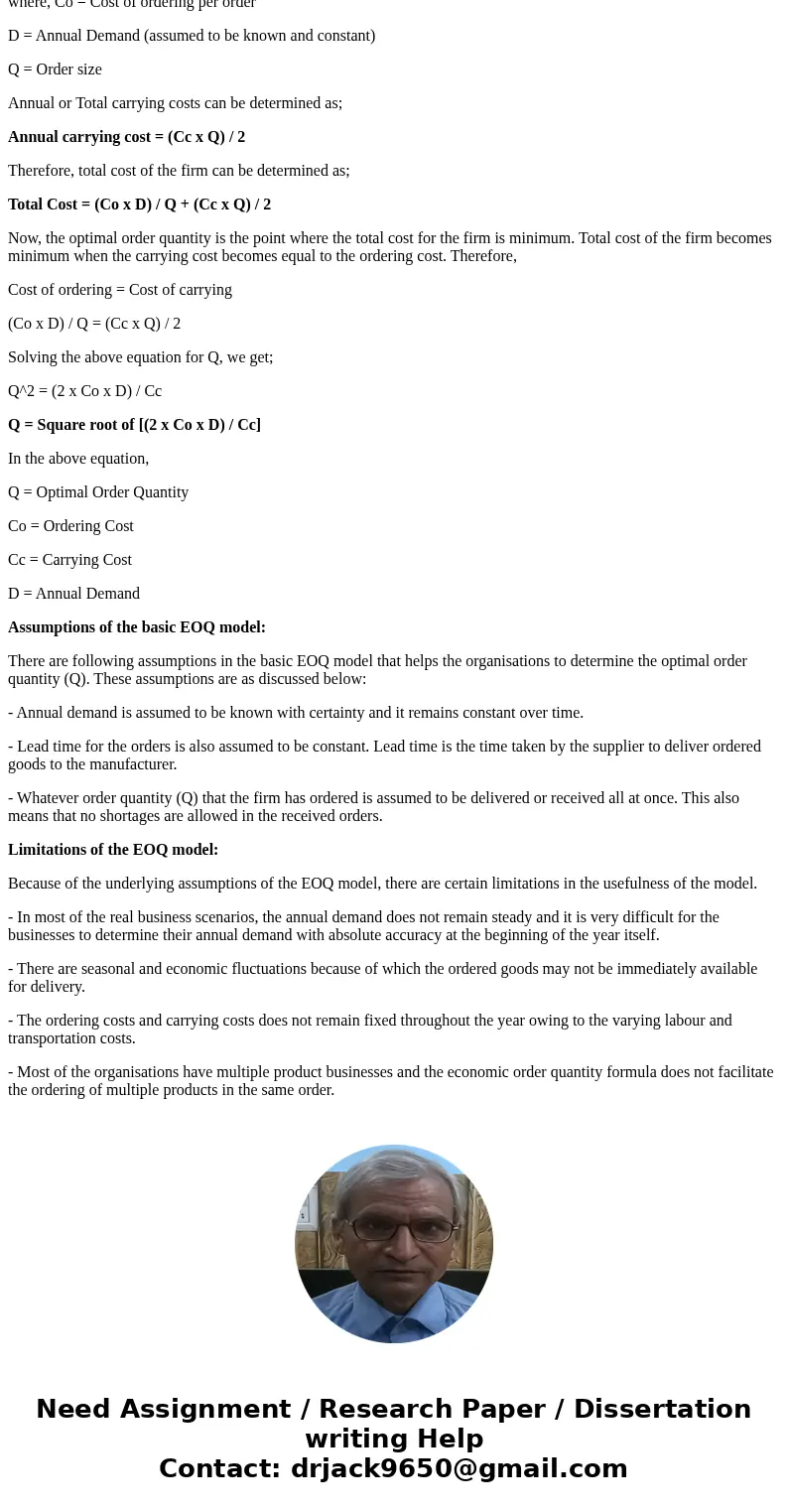Explain how the order quantity is determined using the basic
Explain how the order quantity is determined using the basic EOQ model. What are the assumptions of the basic EOQ model and to what extent do they limit the usefulness of the model?
Solution
Economic order quantity model, as the name suggests, helps in determining the order quantity that needs to be placed in the most cost effective or economic manner. Economic order quantity (EOQ) model is also known as economic lot size model. In an organisation, when the stocked inventory reaches a particular minimum level, a new order is placed with the vendor. This minimum level is called the reorder point. In a continuous or fixed order quantity system, the most widely used method of ordering is the economic order quantity (EOQ) model. EOQ model helps in determining the optimal order quantity such that the total cost of the firm is minimum.
Total cost of the firm is calculated as,
Total Cost = Cost of ordering + Cost of Storing (or carrying)
Annual or Total cost of ordering can be determined as;
Annual ordering cost = (Co x D) / Q
where, Co = Cost of ordering per order
D = Annual Demand (assumed to be known and constant)
Q = Order size
Annual or Total carrying costs can be determined as;
Annual carrying cost = (Cc x Q) / 2
Therefore, total cost of the firm can be determined as;
Total Cost = (Co x D) / Q + (Cc x Q) / 2
Now, the optimal order quantity is the point where the total cost for the firm is minimum. Total cost of the firm becomes minimum when the carrying cost becomes equal to the ordering cost. Therefore,
Cost of ordering = Cost of carrying
(Co x D) / Q = (Cc x Q) / 2
Solving the above equation for Q, we get;
Q^2 = (2 x Co x D) / Cc
Q = Square root of [(2 x Co x D) / Cc]
In the above equation,
Q = Optimal Order Quantity
Co = Ordering Cost
Cc = Carrying Cost
D = Annual Demand
Assumptions of the basic EOQ model:
There are following assumptions in the basic EOQ model that helps the organisations to determine the optimal order quantity (Q). These assumptions are as discussed below:
- Annual demand is assumed to be known with certainty and it remains constant over time.
- Lead time for the orders is also assumed to be constant. Lead time is the time taken by the supplier to deliver ordered goods to the manufacturer.
- Whatever order quantity (Q) that the firm has ordered is assumed to be delivered or received all at once. This also means that no shortages are allowed in the received orders.
Limitations of the EOQ model:
Because of the underlying assumptions of the EOQ model, there are certain limitations in the usefulness of the model.
- In most of the real business scenarios, the annual demand does not remain steady and it is very difficult for the businesses to determine their annual demand with absolute accuracy at the beginning of the year itself.
- There are seasonal and economic fluctuations because of which the ordered goods may not be immediately available for delivery.
- The ordering costs and carrying costs does not remain fixed throughout the year owing to the varying labour and transportation costs.
- Most of the organisations have multiple product businesses and the economic order quantity formula does not facilitate the ordering of multiple products in the same order.


 Homework Sourse
Homework Sourse